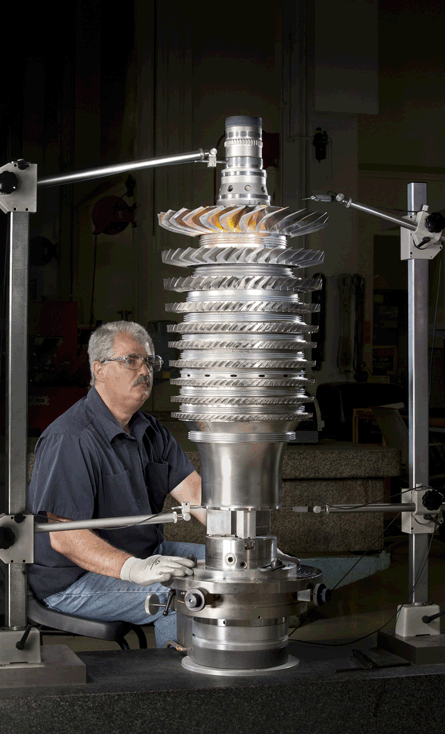CFM has begun tests of a second full-scale engineering core (eCore 2) at 50/50 partner GE's Cincinnati facilities.
During the 24 May first run, Leap-X programme director Ron Klapproth said the engine "went to idle speed" directly, an unusual event given the various slave systems attached to the core that simulate the various other components of a turbofan engine. "This core wants to run," said Klapproth.
The testing is expected to last 3-4 months and 200-250h of operational time, with CFM engineers gathering data from around 1,500 data measurements used to evaluate the 10-stage, 22:1 pressure ratio compressor, combustor and two-stage high pressure turbine.
Overall pressure ratio (OPR) for the complete engine will be 45:1 at sea level and full power, and 50:1 at top of climb, said Klapproth.
Leap-X is the sole engine selection for the Comac C919, due for service entry in 2016 and as an engine choice, along with Pratt & Whitney's geared turbofan, on the Airbus A320neo, set for service entry in late 2015.
 |
|---|
© CFM International |
The Leap-X OPR is almost identical to competitor Pratt & Whitney's PurePower geared turbofan option on the A320neo, although the two companies differ substantially in the mechanisation of the engines. Both use an 18-blade fan - just over 2.05m (81in) diameter for P&W and just under 2m for Leap - but P&W uses a gearing system that allows its low-pressure spool to run at higher speeds with fewer stages than a traditional two-spool engine design such as the Leap-X.
P&W believes the gearing allows the engine to run at higher propulsive efficiencies while having fewer parts and a cooler running core than the Leap, meaning less noise and lower maintenance costs.
CFM considers that the new complexities of the geared design, which include an actively controlled variable area nozzle and controllable stator vanes on the low-pressure compressor, could translate to lower dispatch reliability than the CFM56's industry-leading 99.98%.
CFM tested the previous core, eCore 1, for 150h last year, and had previously built and tested eight earlier cores on various test rigs. A third and "final tune-up" core (eCore 3) will run in 2012, followed by they first engine to test in 2013. Engine certification is expected in 2014.
New for eCore 2 is an increased number of optical light probe sensors at each engine stage to measure blade clearance and blade position without interrupting the air flow, techniques that will make the core perform more closely to the actual engine.
Klapproth said CFM has also run the low-pressure turbine portion of the Leap-X engine at joint venture partner Snecma's facility in France in early May. "Results look terrific," said Klapproth.
Snecma also performed a successful blade-out test for the full 18-blade RTM composite fan and composite fan case for a 1.8m fan. Fan size for the Comac C919 and the A320neo will be 1.98m.
Source: Flight International























